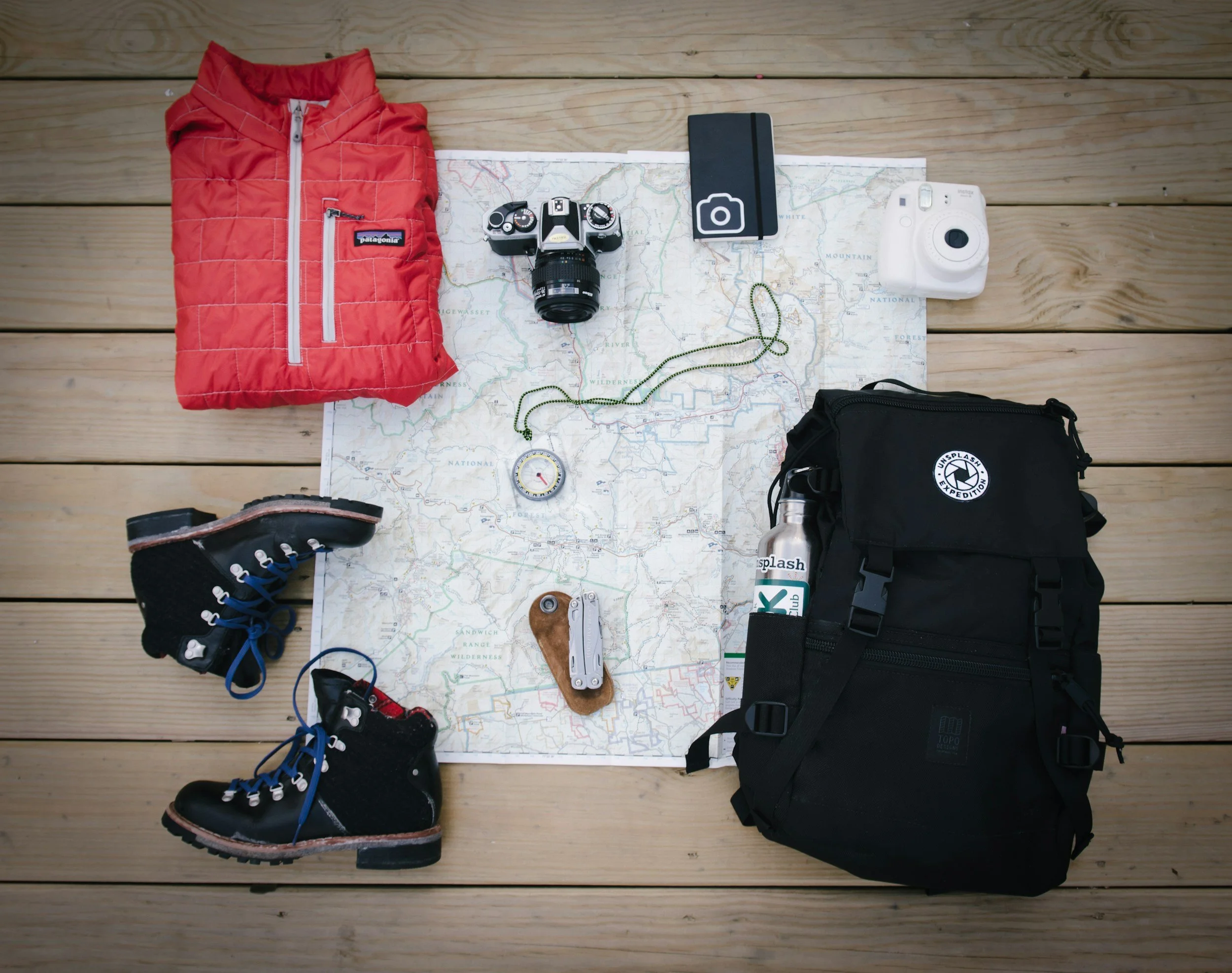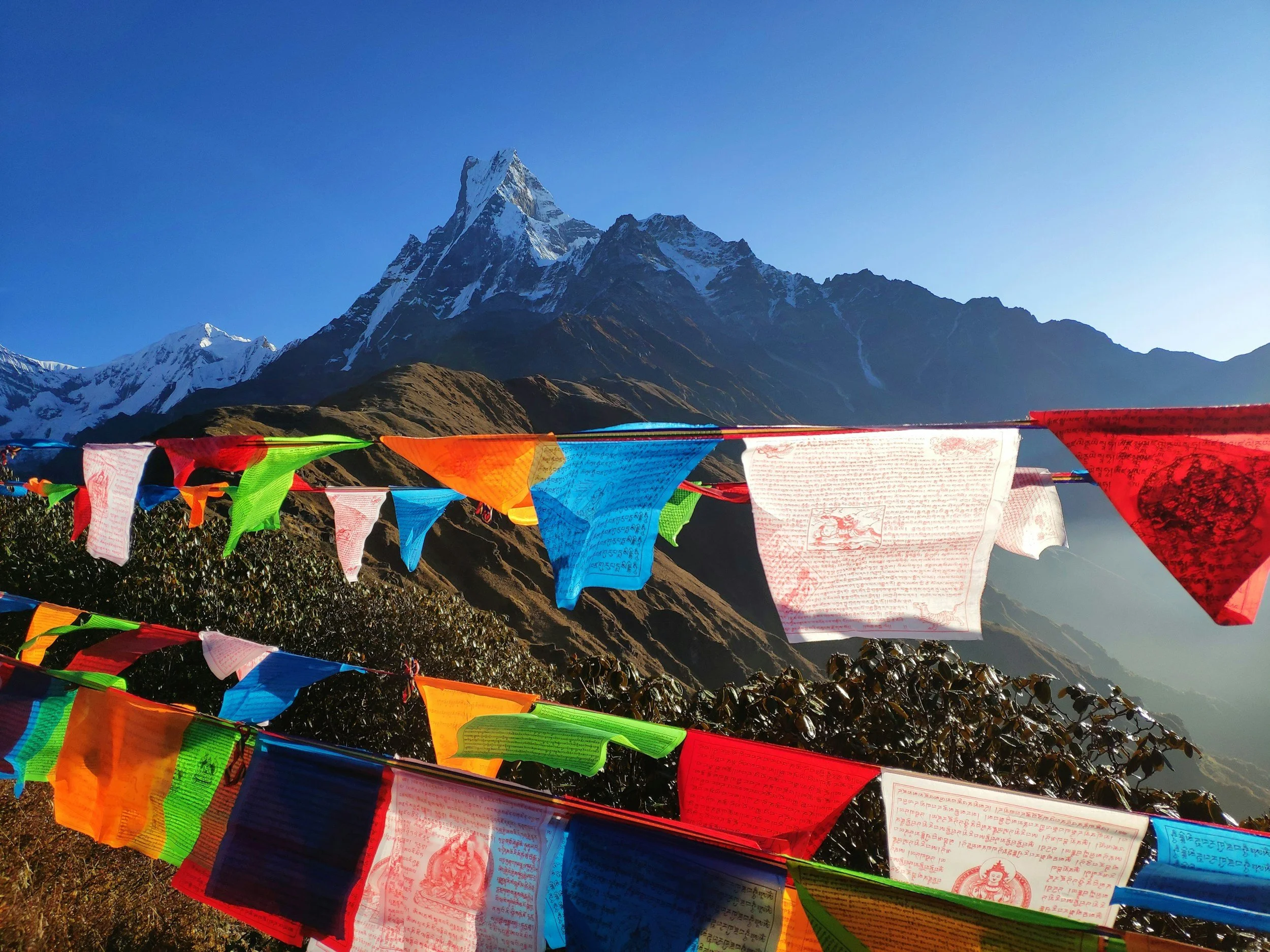Your Ultimate Kit List for the Annapurna Circuit; What you Really Need and What you Don’t
Let’s Talk Packing (Before You Panic-Pack Your Hairdryer)
Now comes the bit that separates the seasoned trekkers from the wildly over-packed: packing. Fear not, my friend, I’ve done the forgetting-so-you-don’t-have-to (yes, I’ve left my undies behind before a big trip). Let’s make sure you’re ready, not riddled with regret at 4,000 metres.
Below is the no-fluff, pack-this-or-freeze list for our Annapurna Circuit adventure this October. Bookmark it. Tattoo it on your soul. Or just, you know, read it carefully.
Bag It Up: What You’ll Carry and What Our Porters Will
1. Duffel Bag
If you’re using our porters (which you should, they’re legends), this is where most of your kit will go. Choose a tough duffel—something like North Face or First Ascent, not the gym bag you found at a car boot sale. Double zips are a must (hello, padlock or cable tie security) and make sure the zippers aren’t going to bail halfway up the mountain.
Packing tip: Keep it under 10kg. That’s the polite, golden rule. Think "essentials", not "entire skincare routine."
2. Day Backpack
This is your new BFF during trekking hours. It’ll carry your water, snacks, camera, and existential questions as you climb higher. Look for:
Size: 20–35L is usually plenty.
Material: Tough, water-resistant fabric is key. (No one likes a soggy flapjack.)
Straps: Padded shoulders, hip belt, and chest strap—save your spine.
Compartments: Side pockets for bottles, and enough room inside for your jacket, snacks, and maybe a yak selfie stick.
Opening: Avoid top-only loading bags unless you enjoy unpacking everything to find your suncream.
3. Rain Cover
Because a wet backpack is a sad backpack. Either get a waterproof pack or pack a separate rain cover (they weigh next to nothing and save your gear from doom).
Hydration Nation
Hydration Bladder + Water Bottles
At altitude, you dehydrate faster (thank the thinner air, extra sweating, and 3 extra wees a day). Aim to carry 2–3L daily.
Bladders are great for sipping on the go.
Bottles = perfect for electrolytes, or as your backup when your hydration hose freezes at 4,500m.
Trekking Poles = Kneesavers
Even the mountain goats bring poles (probably). These will help you descend without feeling like you’ve aged 20 years overnight. Go for adjustable, lightweight (aluminium or carbon fibre) poles. Bonus if they fold up small and have comfy straps.
Sleeping Bags: Not the Time to Skimp
We’ll be staying in teahouses, but trust me, once the sun disappears, it’s properly chilly.
Bring a winter-rated sleeping bag (around -10ºC comfort rating).
Down is best—warm, light, compressible.
Mummy-shaped bags keep your feet from freezing off.
Cold sleeper? Go warmer. It’s easier to unzip than to grow a second skin. Teahouses usually have extra duvets, but I wouldn’t bet my toes on them.
Your Fashion Forecast: Layers Are Life
We’re talking mountain fashion here—think function over fast fashion. Here’s the breakdown:
Base Layers: Moisture-wicking thermals (top + bottom). Synthetic or merino = happy hiker.
Sports Underwear: Avoid cotton. Enough said.
Trekking Shirts: Long-sleeve + short-sleeve combo. Zip-off sleeves? Even better.
Trekking Trousers: Zip-off styles rock. Pockets are a plus.
Fleece Jacket: Toasty mid-layer. Essential.
Waterproof Winter Jacket: Windproof, warm, waterproof. Down or synthetic—but make sure it earns its keep.
Windbreaker or Shell: Lightweight layer for changeable moments (i.e. daily).
Ski Trousers or Overpants: For when it’s really nippy.
Neck Gaiter / Buff / Balaclava: Your face will thank you.
Inner Gloves + Waterproof Mitts: Trust me.
Warm Hat + Sunhat: Double duty – sun by day, snug by night.
House Clothes (a.k.a. teahouse glam): Fleece or trackie bottoms, hoodie, cosy socks. You’ll love peeling off trekking gear after a day’s hike.
Money and Bank Card
Nepal’s currency, the Nepalese rupee (NPR), can only be obtained once you’re in the country — it’s a closed currency. It’s always smart to carry a bit of local currency just in case. You can exchange major international currencies at the airport in Kathmandu when you land. Pro tip: bring crisp, uncreased notes. Nepali money changers are picky and may reject damaged or folded bills.
Alternatively, you can withdraw cash from ATMs using an international bank card. ATMs are easy to find in Kathmandu and Pokhara, but once we hit the trail, they disappear — this is remote mountain country. So withdraw what you need before we head into the hills.
Vaccinations
No vaccinations are legally required to enter Nepal, but there are some we strongly recommend. First, check your childhood jabs are up to date — measles, mumps, polio, tetanus, etc. For travel in Nepal, especially in rural areas, it’s worth speaking to your GP about:
Hepatitis A
Typhoid
Meningitis
Tetanus
Polio
Mumps and Measles (MMR)
Depending on your health background and where you’re travelling before or after the trek, your GP might also recommend:
Hepatitis B
Japanese encephalitis (if visiting during monsoon season or spending extended time in rural areas)
Get a check-up a few weeks before departure and make sure you're topped up where needed.
First Aid Kit
We’ll be trekking above 5,000 m — that’s high enough to cause symptoms of Acute Mountain Sickness (AMS), which can hit anyone, regardless of fitness. Symptoms can include headache, dizziness, nausea and fatigue. Around 40–50% of lowlanders feel some effects of altitude at elevations over 2,500 m — and we’ll more than double that.
It’s smart to chat to your doctor about preventative medication for AMS (like Diamox) and carry it with you just in case. Here’s what else we recommend including in your personal first aid kit:
Antiseptic cream
Plasters, blister plasters, and sports/KT tape
Painkillers (paracetamol and/or ibuprofen)
Anti-nausea, anti-diarrhoea and anti-constipation tablets*
Antibiotics for traveller’s diarrhoea (ask your GP)*
Antihistamines or allergy meds
Petroleum jelly or anti-chafing cream
Throat lozenges
A good multivitamin
*Digestive disruptions are common at altitude — better to be prepared than caught short.
Toiletries
You’ll want to pack light but smart. Decant liquids into travel-size containers and take just what you’ll need for the trip. Here’s your essentials list:
Toothbrush and toothpaste
Face wash
High-quality moisturiser (the mountain air is dry)
Hand cream
Lubricating eye drops (wind and dust are real)
SPF lip balm
Wet wipes (your shower on non-shower days)
Waterless hand sanitiser
Biodegradable soap (and a soap box)
Ear plugs (for the plane, for noisy teahouse roommates…)
Baby powder (for boots, or dry shampoo in a pinch)
Dryer sheets (rub on smelly clothes to freshen them up)
I’ll say it again: wet wipes are gold. Showers aren’t always available or warm — so a full-body wipe-down can feel like luxury.
Sundries
Some items don’t fit into neat categories but are still total must-haves. Here’s your list of practical bits and pieces:
Water purification tablets – especially important if you're trekking solo. If you’re with us, we’ll purify drinking water for you, but a backup is never a bad idea.
Broad-spectrum sunscreen (SPF 40+) – UV rays are intense at altitude, even on cloudy days.
Sunglasses – choose wraparound styles that block UVA and UVB. Snow blindness is real and no fun.
Microfibre towel – compact, fast-drying, and perfect for trail life.
Pillowcase – teahouse pillows are… variable. Bring a clean case for peace of mind.
Biodegradable waterproof bags or dry bags – keep wet or dirty clothes separate, and keep dry things dry.
Snacks – high-energy treats like protein bars, trail mix, sweets or electrolyte sachets (e.g. Rehidrat). Sometimes a familiar taste can lift you right up.
Toilet rolls – always have a backup. Enough said.
If you want to go the extra mile, consider packing a small bag for collecting litter along the route — joining the 10 Pieces movement is a simple but powerful way to give back to the trail.
Tech Essentials
You won’t need loads of tech, but a few key items can make the trek smoother and more enjoyable.
Mobile phone – with camera, maps and offline notes.
Camera – optional if you don’t want distractions, or if you’d rather keep your phone tucked away.
Binoculars – spot Himalayan wildlife or take in far-off mountain vistas.
Headlamp – hands-free light for early starts, evening toilet trips or teahouse blackouts. Don’t forget spare batteries.
E-reader – lightweight and perfect for rest days or long evenings.
Power bank – ideally two. Solar power banks are handy if you clip them to your pack, but unreliable in cloud or shade.
International adapter – Nepal uses plugs types C, D and M. Check your devices and make sure your adapter fits.
All necessary charging cables and spare batteries – it’s easy to forget the small stuff.
Finally, a few nice-to-haves that can elevate your comfort and experience:
Sleeping bag liner – keeps your bag (or rental bag) clean and adds a little extra warmth.
Safety whistle – attach to your pack for peace of mind.
Hand warmers or small hot water bottle – a game changer on freezing nights.
Playing cards – great for bonding with the group.
Small gifts – something to offer locals or fellow trekkers (sweets, key-rings, etc.)
Travel journal and pen – for reflections, route notes or creative moments.
Annapurna map or pocket guide – handy for context, navigation, or just geeking out about where you’ve been.
In Summary: Pack Smart, Not Panic
We’re not climbing Everest, but we are going high. Your gear doesn’t have to be top-of-the-range or bankrupting, but it should work hard for you. Pack for function, layer like an onion, and most importantly—don’t overthink it.
If you’re unsure about any item or want to run your kit past me before we go, just drop me a message. I’ve got plenty of thoughts and zero judgment (unless you pack heels).
See you on the trail!
— Mary
Trails and Fitness
Adventure. Sweat. Snacks. Repeat.


